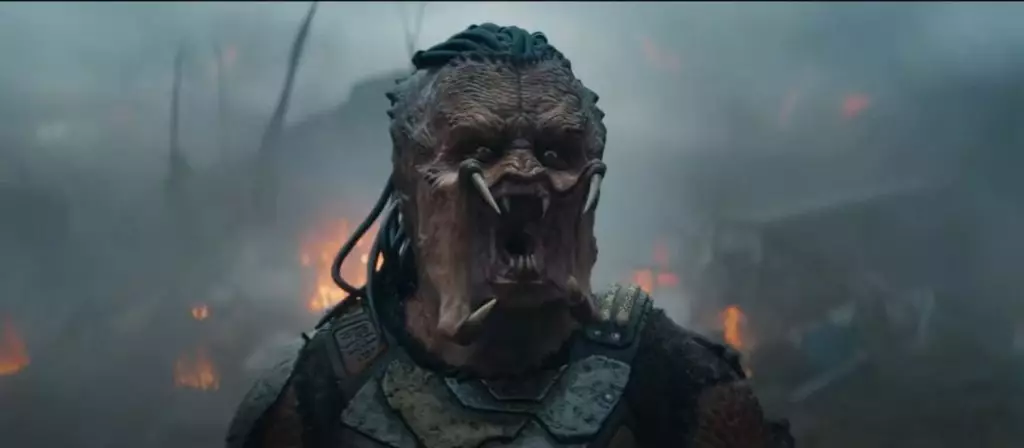Traditionally, Comic-Con has been synonymous with the grand unveiling of Marvel’s latest cinematic universe developments, but this year marks a notable departure from that norm. Instead of Marvel dominating the scene, Disney has strategically pivoted to introduce audiences to fresh narratives outside the familiar superhero realm. With premieres like 20th Century Studios’ *Predator: Badlands* and the eagerly anticipated *Tron: Ares*, Disney showcases a remarkable willingness to diversify its portfolio. This move signals a compelling shift: big studios recognize that sheer reliance on established franchises may no longer suffice. In an era saturated with superhero fatigue, embracing originality and unexpected storytelling avenues is not just refreshing but essential for long-term relevance. This approach indicates a deep understanding that innovation, rather than repetition, is the true engine of audience engagement.
Revitalizing the Predator Franchise with Empathy and Novelty
*Predator: Badlands* represents a bold reinvention of a classic franchise, choosing to center its narrative around a Predator protagonist—a stark contrast to the usual human-centric stories. The decision to explore the perspective of an outcast Predator reflects an ambitious desire to deepen the franchise’s mythos. The film’s emphasis on emotional storytelling and character-driven arcs signals a departure from the franchise’s traditional focus on chaos and violence. By framing these predators with empathy, the filmmakers challenge audiences to consider the creature’s story beyond its reputation as a ruthless hunter. Such creative risks elevate the genre, transforming simple monster movies into nuanced tales of identity, kinship, and survival. Additionally, the film’s decision to exclude human characters in critical moments magnifies the Predator’s story, allowing viewers to appreciate the creature’s complex emotional universe.
Innovative Storytelling: The Power of Visual Effects and Authenticity
One aspect that stands out in *Badlands* is its emphasis on practical effects and authentic cinema techniques. Director Dan Trachtenberg’s commitment to shooting in New Zealand and utilizing practical effects signifies a deliberate move away from CGI-heavy productions, fostering a more visceral viewer experience. This dedication to realism enhances character immersion and lends credibility to the film’s fantastical elements. Moreover, the narrative’s focus on a youthful Predator and his familial conflicts introduces new thematic layers, emphasizing personal growth, familial duty, and defiance. Such narrative depth is often absent in traditional franchise entries, highlighting how experimental storytelling can invigorate even the most familiar lore. Trachtenberg’s proven track record with *Prey* demonstrates that respect for craftsmanship coupled with inventive narratives can resonate profoundly with audiences.
Forward-Thinking in Franchise Development
The landscape of franchise filmmaking is undergoing a transformation, with studios increasingly willing to challenge conventions. Disney’s approach here exemplifies a strategic shift: investing in stories that portray non-traditional heroes and novel settings, rather than just expanding existing IPs. The cautionary tale of *Prey*—initially streamed and later recognized as a storytelling gem—serves as evidence that platforms and formats are evolving. The theatrical release of *Predator: Badlands* indicates a renewed confidence in original visions, asserting that audiences crave fresh viewpoints even within well-worn genres. This shift might ultimately define the future, emphasizing quality, authenticity, and emotional resonance over mere franchise expansion. It’s a daring move, and one that could serve as a blueprint for other studios seeking to remain vibrant and innovative in an increasingly competitive entertainment environment.
The Future of Genre Innovation: A Call to Courageous Storytelling
What emerges from this year’s Comic-Con is a testament to the power of courage in storytelling. By daring to tell stories that diverge from the mainstream, studios can tap into new emotional spaces and create more meaningful engagement. Whether through exploring the inner lives of monsters or reimagining iconic universes, the emphasis is on pushing boundaries and taking creative risks. As an audience, we are starved for narratives that challenge perceptions, evoke empathy, and present familiar worlds through fresh lenses. The evolution of these franchises highlights that the most compelling stories often arise from daring to be different—an essential lesson for creators striving to make an indelible mark amid a landscape cluttered with déjà vu.
